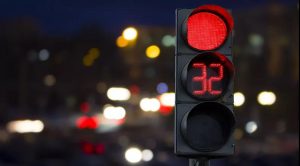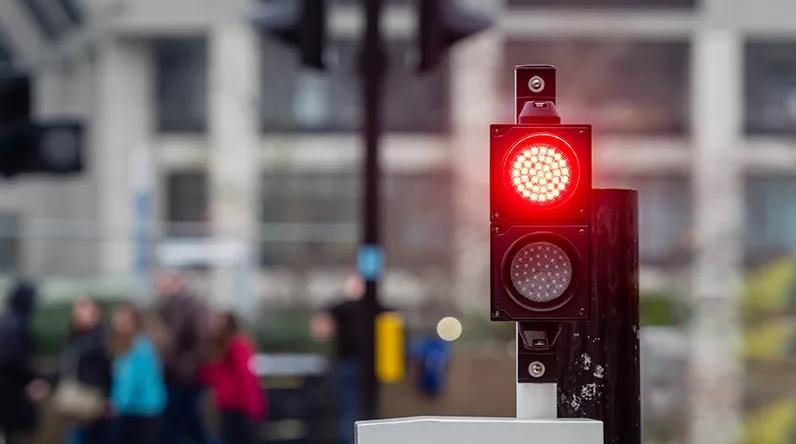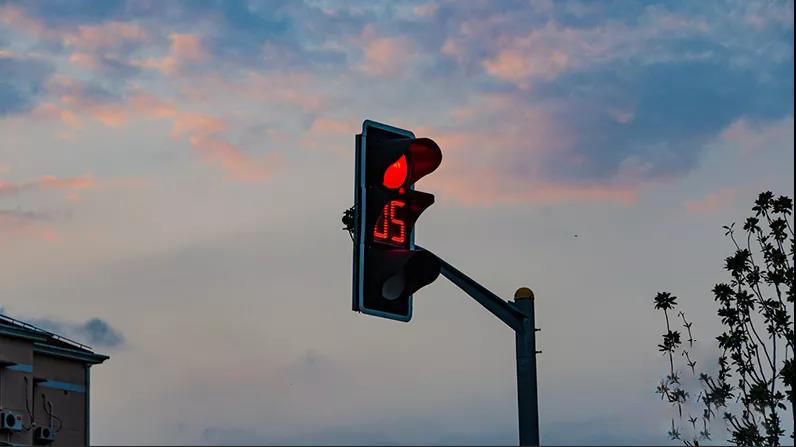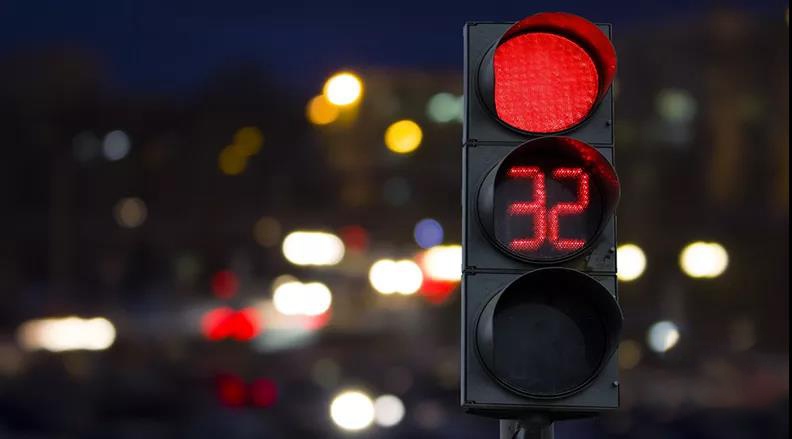
The best time to drive is when you have a green light, unobstructed and one foot on the accelerator to your destination; Perhaps the worst experience of driving is that no matter how to avoid, you are always accurately locked in front of the red light.
The best time to drive is when you have a green light, unobstructed, and a foot on the accelerator to your destination; Perhaps the worst experience of driving is that no matter how to avoid, you are always accurately locked in front of the red light.

You think it’s a matter of character? In fact, this is not only a mathematical problem full of probability, but also a problem in the field of operational research optimization.
Magic green wave speed per hour
The vehicle has a certain speed in the process of driving, and the process of changing the signal light is inextricably related to the speed.
When the driver keeps a certain speed on a clear street, the signal lights at the intersection are probably the same color.
If you want a green light all the way, the method is actually very simple. Just keep the speed of the vehicle consistent with the green wave speed of the signal light.
Green wave speed per hour is also called green wave belt, wave speed control or multi intersection signal linkage. It is mainly designed in sections with more intersections. The traffic designer originally designed the green wave speed per hour to make the signal timing more accurate and scientific, and create a good road traffic environment.
I wonder if you have noticed that there are more and more digital traffic signs on both sides of the road in the past two years. Don’t simply think that this is a speed limit sign. It is likely that this number is conveying to you the “green wave speed” of the road.
When driving the vehicle at the specified speed, the probability will be unobstructed.
This is when the signal control system adjusts the starting time of the green light according to the road section distance, so as to ensure that the traffic flow just encounters the “green light” when it reaches the intersection. As long as the driver drives at a certain speed, he can get the green light all the way.

Of course, the speed setting of green wave per hour is different in different regions. If the speed requirement of a road section is 60km / h, when the driver passes the green light at this speed, as long as the speed is maintained, the next few traffic light intersections will have green lights all the way.
If the speed requirement of this section is 50km / h and the driver still maintains the speed of 60km / h, the red light is bound to be encountered all the way; On the contrary, if the speed cannot be maintained in the morning and evening peak, the driver is likely to miss the green wave zone, resulting in “blocking and blocking”.
Calculation method of green wave velocity
With the development and progress of the times, the number of private cars in various countries is increasing year by year. In order to provide a better traffic environment, “green wave speed” came into being.
At present, the green wave speed is controlled behind the main roads in all cities, and the speed is unified in the range of 50-60km / h. nowadays, there are cumbersome calculation methods behind the convenient traffic rules.
Firstly, it is necessary to determine the scope of trunk roads for green wave control and investigate the traffic flow at each intersection; Then, the optimal signal timing and signal period of each intersection shall be calculated. According to the calculated results, an optimal period shall be calculated, which will be applicable to all intersections with “green wave velocity”.
According to the distance between different intersections and the design speed of the road, the time interval for turning on the green light between adjacent intersections is calculated. Finally, the most efficient traffic control mode is obtained through repeated debugging.

If you observe carefully, you will find that the green wave velocity is generally applied to the trunk road from the central urban area to the peripheral urban area.
The purpose of this is to let the vehicles in the central area drive out of the core area as soon as possible; Green waves are often not set on the roads corresponding to the direction of driving into the central urban area, and even the opposite “red waves” are sometimes set.
The purpose is to make vehicles entering the core area wait for red lights several times, so as to reduce the traffic pressure in the core area.
Research on internationally recognized road access manual shows that the improvement rate of traffic congestion and delay at green wave speed is as high as 20%, which is a positive feedback to both vehicles and traffic environment.
Control mode of green wave speed
At present, the green wave control commonly used on the road is mainly divided into one-way control and two-way control.
Unidirectional control is mostly applied to roads with control demand, such as one-way line or morning and evening peak commuting.
However, the disadvantages it brings are also relatively obvious, which may affect the effect of control coordination, and the probability of encountering red lights will be relatively high.
The other is the two-way control of green wave. The two-way green wave is generally used on the equidistant pavement at the intersection.
Although the application effect is remarkable, its application conditions are relatively harsh. Most of the two-way green wave control needs to be realized through phase splitting or phase overlapping.
Its disadvantage is that it will bring signal loss and affect the loss and delay of other uncoordinated vehicles.

Therefore, in the process of practical application, the control mode of segmentation or intersection of the two will be generally adopted to coordinate the overall road situation and realize the optimal solution of road traffic to the greatest extent under the condition of controlling traffic cost.
With the emergence of driverless, automatic driving and other technologies, the application of vehicle road cooperation technology will continue to improve. In the future, we may realize perfect travel through intelligent means.
Comments